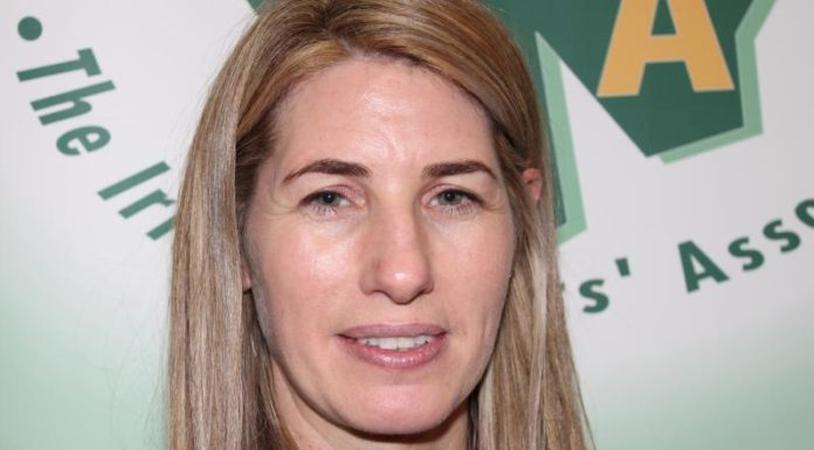Connacht Tribune
Do we need our own school to protect our kids from Covid?

The return to school is less than a month away – but as Galway journalist and mother TESS FINCH-LEES reveals, the rules on minimising the risk of Covid have all but vanished from the agenda. So here she outlines her own radical solution.
“God loves a trier”, as my Dad used to say – and God knows I’ve tried to persuade Norma Foley to make schools Covid safe. They’re not, but I won’t stop trying.
In the meantime, schools re-open in three weeks against a backdrop of a data blackout, a more contagious variant incoming, waning and pummelled immunity from repeated infections, with no protections in place. And monkeypox.
School staff have, yet again, been put in an invidious position.
Since Micheál Martin unilaterally downgraded Covid to flu and devolved public health to “personal responsibility”, it’s up to parents to risk-assess now.
But, if we’re not allowed to know if the unmasked kid sitting next to ours who was off sick for a few days has Covid and is potentially still infectious, how can we? Nits we need to be informed of, but a highly infectious neurotropic disease that can cause organ damage, disability and death?
That’s an ecumenical matter.
The European Centre for Disease Prevention and Control (ECDC) and WHO measures to prevent the spread of infection in schools include reducing community transmission, vaccination, distancing, masks, improved ventilation, testing, sequencing, contact tracing and isolation. Ireland has either stalled or rolled back on these.
I spoke to one of the country’s leading children’s rights lawyers, Gareth Noble, who said: “I’m concerned we’re creating a culture of conditioning us to think Covid infections and outbreaks in schools are inevitable.
They’re not.
We significantly reduce risk for our children if we follow basic public health advice such as mask-wearing, contact tracing, air filtration and other measures. Any expert advice from the WHO needs to be considered and actioned. Ignoring it would be negligent.”
I’ve worked in child protection where “negligent” is synonymous with child harm. That’s not something I can ignore. Unless parents are prepared to say, “we don’t consent to exposing our children to Covid infection at school”, our consent will be presumed tacit.
I wrote my first article about Covid safe schools two years ago. There have been many more since. Each time, teachers, parents and children contact me sharing their concerns. Many are either clinically vulnerable (CV) or have a family member who is CV. Some – previously healthy children and teachers – have developed Long-Covid and now have “underlying conditions”.
In the absence of any plan forthcoming, concerned parents are agonising about what to do come September.
In order to attend school, immunocompromised Galway mother (Joan) has to send her twelve-year-old (Brian) to live with her sister – a 30-minute drive away. Without mitigations, bringing the virus home from school could kill Joan. Parting with her son was her only choice.
Some choice.
I anticipate the next year being quite perilous. No public health protections, new – more transmissible – vaccine-escaping variants emerging more frequently, so expect serial (re)infections, which the WHO’s Dr Mike Ryan warns, increases the risk of long-Covid, even in “mild” acute cases. The sterilising vaccines that prevent transmission and infections, are unlikely to emerge within the next twelve months. It’s time for plan b.
Home-schooling works for some, but not my son, who’d rather have his eyeballs poked by pigeons than have me as his teacher.
So, I scoured the internet to see if any school anywhere had managed to prevent Covid outbreaks. I found one – Abrome, in Texas. How did it do it? By ignoring politicians and following the science.
Acknowledging Covid is airborne, mitigations included daily testing, mandatory FFP2/3 masks (unless medically exempt) indoors and outdoors in close contact during surges, distancing, remote learning when cases were extremely high, outdoor learning options, and Hepa filtration in every classroom. If CO2 readings exceeded 800, rooms were evacuated and classes continued in sheltered outdoor spaces, also used for eating. Everyone is vaccinated.
Although I don’t intend to set up a school, the Abrome project inspired me to think out of the box. Using their Covid safe template, why not try to re-create something similar, albeit on a much smaller scale (four to six third year students) somewhere close to home – Galway?
I visualise it as a kind of community bubble with children of the same age meeting up to learn, play and breathe clean air in a Covid safe space. As large or small a gathering as demand and logistics permit.
Having read about Abrome in my recent Irish Independent article, a mother in Dublin messaged me to say it prompted a conversation among friends about whether they could do something similar. I like that. Starting a conversation. Putting an idea and a dollop of hope out into the world and see what comes back.
If this column was an advert it would read:
WANTED: 14-year-olds – and a teacher – who don’t want to be (re)infected with a neurotropic, vascular, SARS-CoV-2 virus at school this year. No excuse required.
I don’t know if anything will come of this, but I do know it’s better to have tried and failed than to have never tried at all.
To start the conversation, email: tflees26@gmail.com
Connacht Tribune
West has lower cancer survival rates than rest

Significant state investment is required to address ‘shocking’ inequalities that leave cancer patients in the West at greater risk of succumbing to the disease.
A meeting of Regional Health Forum West heard that survival rates for breast, lung and colorectal cancers than the national average, and with the most deprived quintile of the population, the West’s residents faced poorer outcomes from a cancer diagnosis.
For breast cancer patients, the five-year survival rate was 80% in the West versus 85% nationally; for lung cancer patients it was 16.7% in the west against a 19.5% national survival rate; and in the West’s colorectal cancer patients, there was a 62.6% survival rate where the national average was 63.1%.
These startling statistics were provided in answer to a question from Ballinasloe-based Cllr Evelyn Parsons (Ind) who said it was yet another reminder that cancer treatment infrastructure in the West was in dire need of improvement.
“The situation is pretty stark. In the Western Regional Health Forum area, we have the highest incidence of deprivation and the highest health inequalities because of that – we have the highest incidences of cancer nationally because of that,” said Cllr Parsons, who is also a general practitioner.
In details provided by CEO of Saolta Health Care Group, which operates Galway’s hospitals, it was stated that a number of factors were impacting on patient outcomes.
Get the full story in this week’s Connacht Tribune, on sale in shops now, or you can download the digital edition from www.connachttribune.ie. You can also download our Connacht Tribune App from Apple’s App Store or get the Android Version from Google Play.
Connacht Tribune
Galway minors continue to lay waste to all opponents

Galway 3-18
Cork 1-10
NEW setting; new opposition; new challenge. It made no difference to the Galway minor hurlers as they chalked up a remarkable sixth consecutive double digits championship victory at Semple Stadium on Saturday.
The final scoreline in Thurles may have been a little harsh on Cork, but there was no doubting Galway’s overall superiority in setting up only a second-ever All-Ireland showdown against Clare at the same venue on Sunday week.
Having claimed an historic Leinster title the previous weekend, Galway took a while to get going against the Rebels and also endured their first period in a match in which they were heavily outscored, but still the boys in maroon roll on.
Beating a decent Cork outfit by 14 points sums up how formidable Galway are. No team has managed to lay a glove on them so far, and though Clare might ask them questions other challengers haven’t, they are going to have to find significant improvement on their semi-final win over 14-man Kilkenny to pull off a final upset.
Galway just aren’t winning their matches; they are overpowering the teams which have stood in their way. Their level of consistency is admirable for young players starting off on the inter-county journey, while the team’s temperament appears to be bombproof, no matter what is thrown at them.
Having romped through Leinster, Galway should have been a bit rattled by being only level (0-4 each) after 20 minutes and being a little fortunate not to have been behind; or when Cork stormed out of the blocks at the start of the second half by hitting 1-4 to just a solitary point in reply, but there was never any trace of panic in their ranks.
For more, read this week’s Connacht Tribune.
Connacht Tribune Digital Edition App
Download the Connacht Tribune Digital Edition App to access to Galway’s best-selling newspaper.
Click HERE to download it for iPhone and iPad from Apple’s App Store, or HERE to get the Android Version from Google Play.
Or purchase the Digital Edition for PC, Mac or Laptop from Pagesuite HERE.
Get the Connacht Tribune Live app
The Connacht Tribune Live app is the home of everything that is happening in Galway City and county. It’s completely FREE and features all the latest news, sport and information on what’s on in your area. Click HERE to download it for iPhone and iPad from Apple’s App Store, or HERE to get the Android Version from Google Play.
Connacht Tribune
Gardaí and IFA issue a joint appeal on summer road safety

GARDAÍ and the IFA have issued a joint appeal to all road users to take extra care as the silage season gets under way across the country.
Silage harvesting started in many parts of Galway last week – and over the coming month, the sight of tractors and trailers on rural roads will be getting far more frequent.
Inspector Conor Madden, who is in charge of Galway Roads Policing, told the Farming Tribune that a bit of extra care and common-sense from all road users would go a long way towards preventing serious collisions on roads this summer.
“One thing I would ask farmers and contractors to consider is to try and get more experienced drivers working for them.
“Tractors have got faster and bigger – and they are also towing heavy loads of silage – so care and experience are a great help in terms of accident prevention,” Inspector Madden told the Farming Tribune.
He said that tractor drivers should always be aware of traffic building up behind them and to pull in and let these vehicles pass, where it was safe to do so.
“By the same token, other road users should always exercise extra care; drive that bit slower; and ‘pull in’ that bit more, when meeting tractors and heavy machinery.
“We all want to see everyone enjoying a safe summer on our roads – that extra bit of care, and consideration for other roads users can make a huge difference,” said Conor Madden.
He also advised motorists and tractor drivers to be acutely aware of pedestrians and cyclists on the roads during the summer season when more people would be out walking and cycling on the roads.
The IFA has also joined in on the road safety appeal with Galway IFA Farm Family and Social Affairs Chair Teresa Roche asking all road users to exercise that extra bit of care and caution.
“We are renewing our annual appeal for motorists to be on the look out for tractors, trailers and other agricultural machinery exiting from fields and farmyards,” she said.
For more, read this week’s Connacht Tribune.
Connacht Tribune Digital Edition App
Download the Connacht Tribune Digital Edition App to access to Galway’s best-selling newspaper.
Click HERE to download it for iPhone and iPad from Apple’s App Store, or HERE to get the Android Version from Google Play.
Or purchase the Digital Edition for PC, Mac or Laptop from Pagesuite HERE.
Get the Connacht Tribune Live app
The Connacht Tribune Live app is the home of everything that is happening in Galway City and county. It’s completely FREE and features all the latest news, sport and information on what’s on in your area. Click HERE to download it for iPhone and iPad from Apple’s App Store, or HERE to get the Android Version from Google Play.












